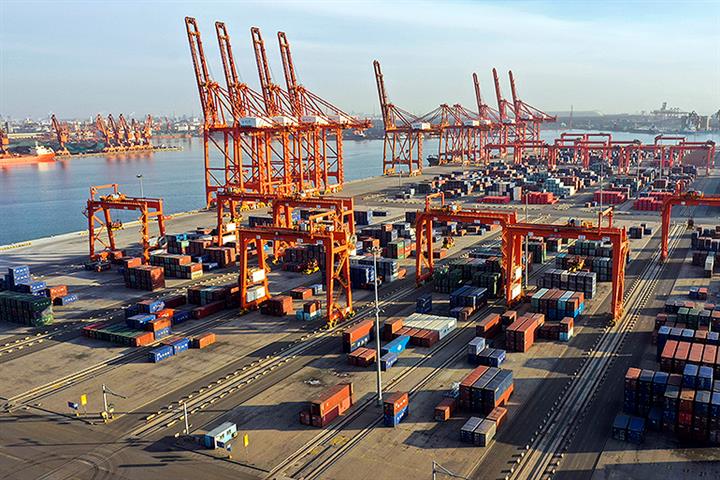 China’s Trade Surplus Was Lowest in Eight Months in November, Missing Expectations
China’s Trade Surplus Was Lowest in Eight Months in November, Missing Expectations(Yicai Global) Dec. 8 -- China’s trade surplus with the rest of the world was the smallest in eight months in November, thwarting expectations, mainly because of weaker external demand, according to experts.
The trade surplus shrank 2.5 percent from a year earlier to USD69.9 billion in November, data from the General Administration of Customs showed yesterday. Exports fell 8.7 percent to USD296.1 billion, while imports tumbled at a faster 10.6 percent pace to USD226.2 billion.
Chief economists surveyed by Yicai Global predicted a USD75.9 billion surplus on a 1.6 percent and 1.2 percent drop in exports and imports, respectively.
Analysts said November’s trade surplus, the lowest since April’s USD49.62 billion, was mainly the result of a decline in overseas demand.
The US Federal Reserve's interest rate hikes and other factors have led to soaring prices in overseas markets and a subsequent decline in consumer demand, resulting in inventory pressures that exceed previous years and weighing on orders, Wei Jianguo, vice chairman of the China Center for International Economic Exchanges and a former vice minister of commerce, told Yicai Global.
Global manufacturing production contracted for a fourth month in row in November. The J.P. Morgan Global Manufacturing Purchasing Managers’ Index fell to a 29-month low of 48.8 in last month, down from 49.4 in October.
The manufacturing PMI calculated by the US Institute for Supply Management was 49 last month, down from 50.2 in October, falling into negative territory for the first time in 29 months, said Zheng Huocheng, director of the Yingda Securities Research Institute, noting that this also hit China’s foreign trade in November.
In the January to November period, China’s exports jumped 9.1 percent to USD3.29 trillion from a year earlier, with imports up 2 percent at USD2.49 trillion, for a trade surplus of USD802 billion, an increase of 39 percent, official figures also showed.
The first 11 months of the year basically met expectations, Huo Jianguo, vice chair of the China Society for World Trade Organization Studies, told Yicai Global. Trade has come under greater pressure in the fourth quarter, resulting in a larger decline in November.
China’s foreign trade growth has generally been steady this year, with factors such as the pandemic having a relatively minor impact on imports and exports, Wei said.
Trade with the Association of Southeast Asian Nations contributed 14.4 percent to China’s overall foreign trade, up 1 percentage point from a year ago and making ASEAN the country’s top trading partner. The European Union and the United States ranked second and third at 13.7 percent and 12.5 percent, down 0.2 point and 0.5 point, respectively.
The growth in foreign trade with Southeast Asian was mainly due to the benefits of the Regional Comprehensive Economic Partnership, Huo noted, adding that despite some pressure, the figures in the North American and European Union markets did not show significant declines.
China should continue its “deep plowing” strategy in Southeast Asia, Huo suggested. And after the United States raised interest rates, inflation has eased, which may help the recovery in demand, he said.
Editor: Futura Costaglione